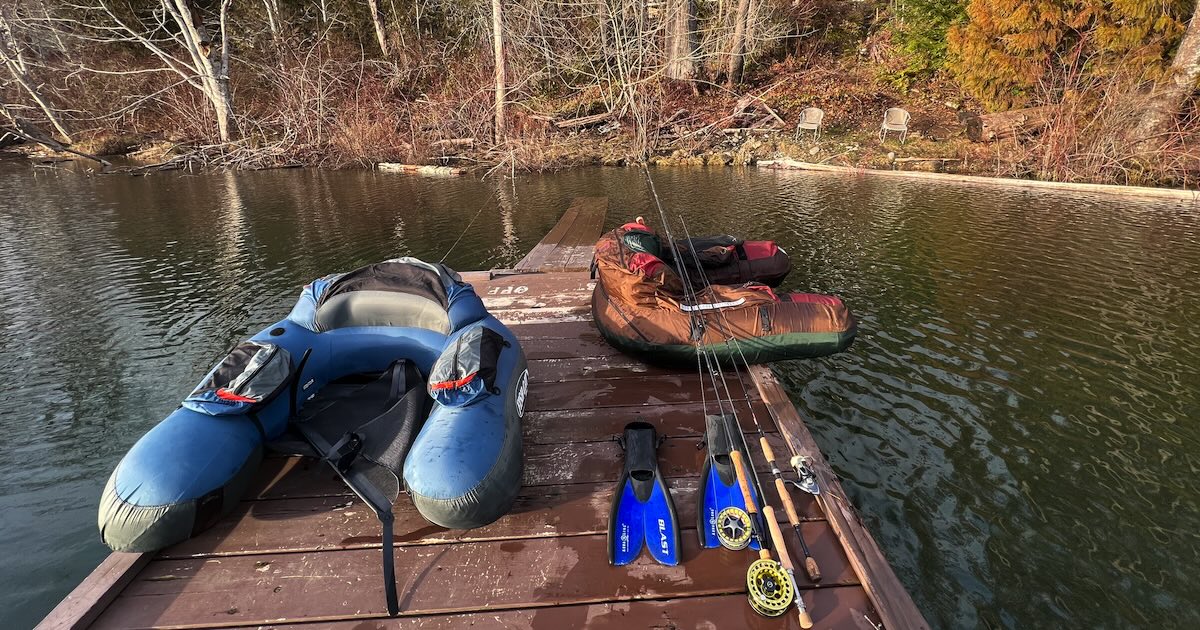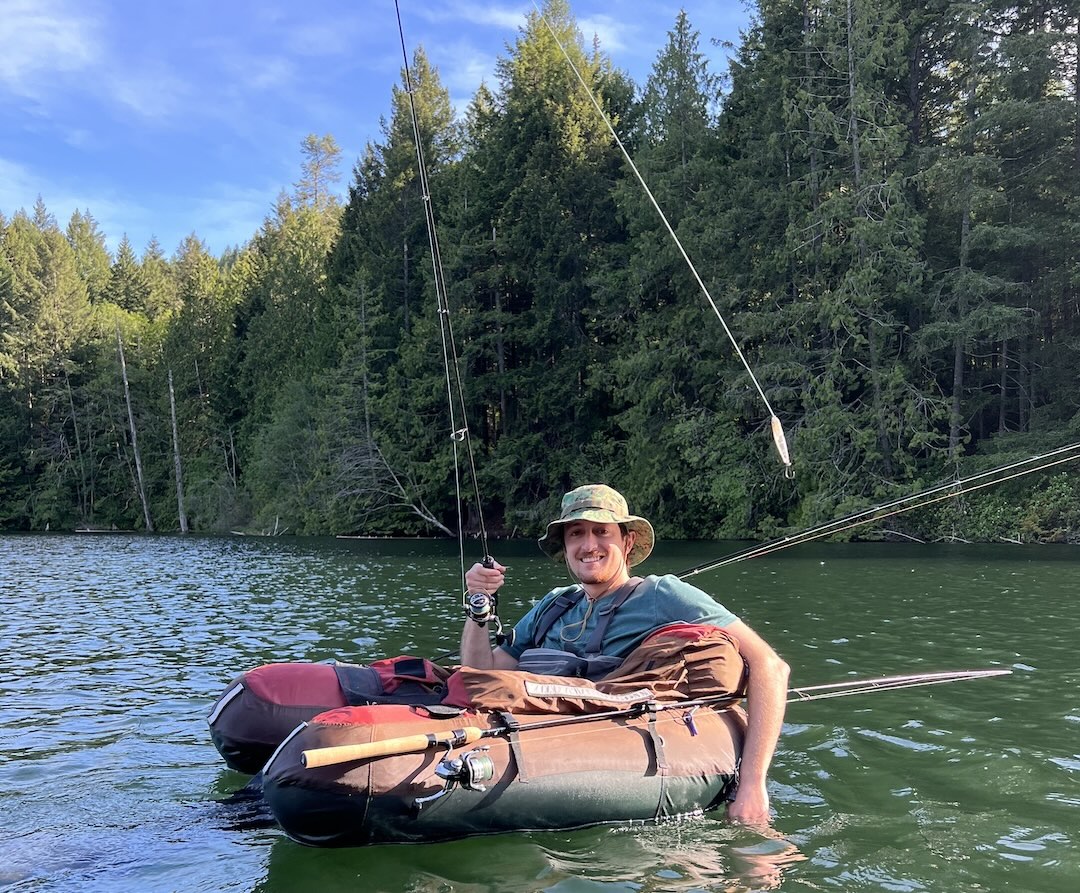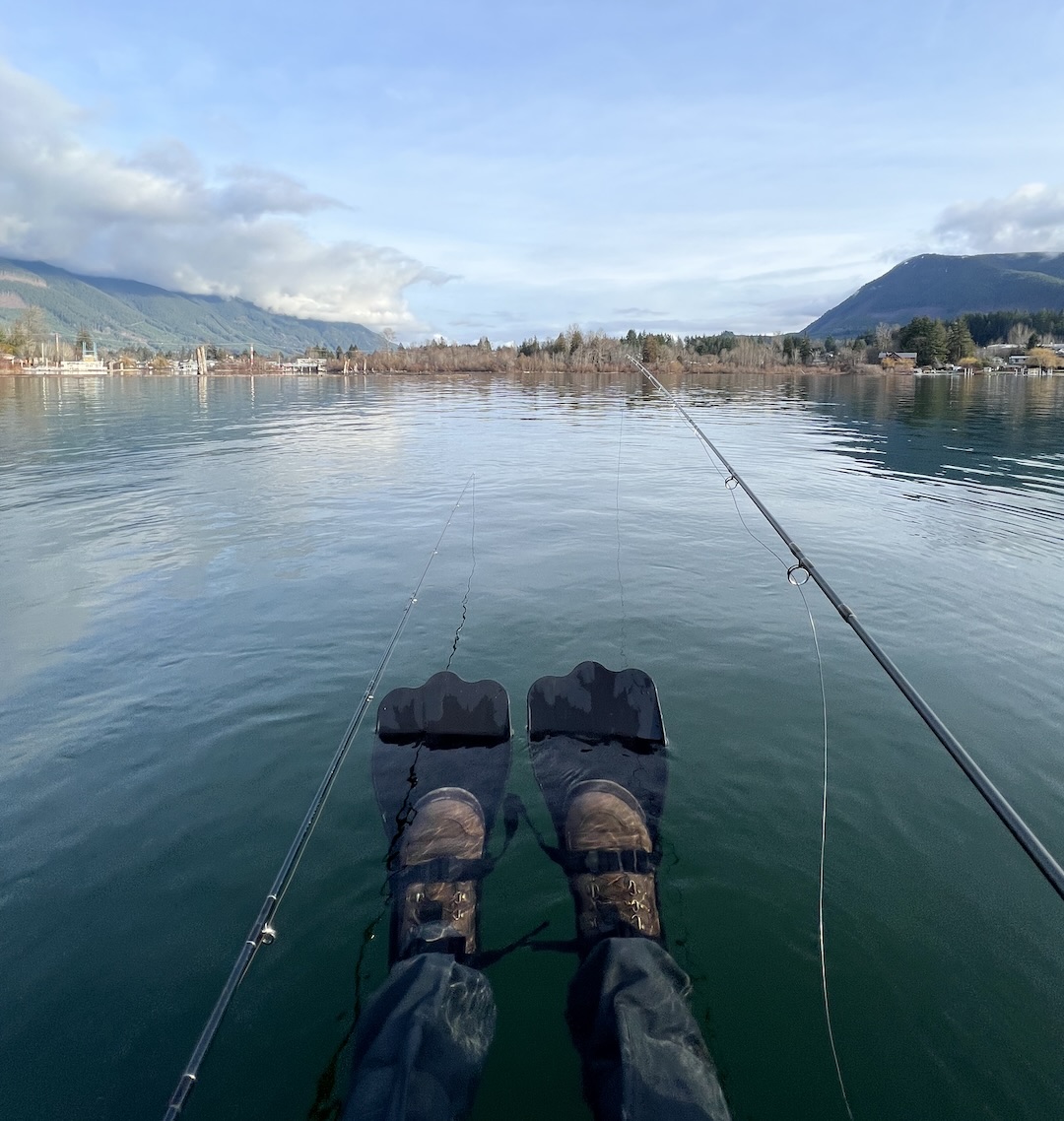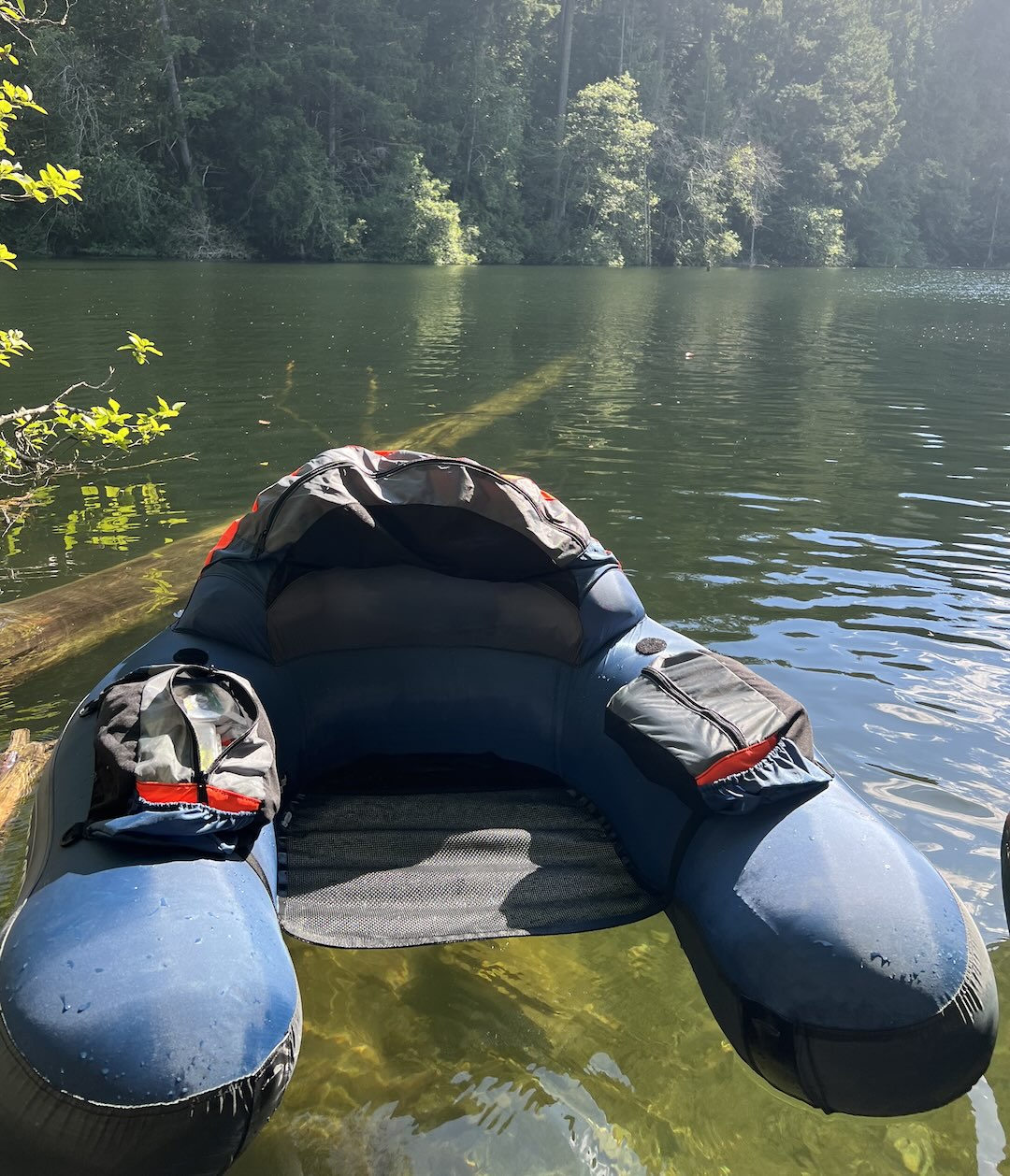
Now I’m not saying that kayak fishing isn’t a ton of fun, or that cleaning up the old tinner for a spring outing doesn’t make for an exciting day on the lake, but have you ever thought that there might be a better way to get out on the water? It took me years of fishing various watercraft to decide that I wanted an easier way to access the honey holes that I couldn’t reach from shore. I found that I was passing up on good days of fishing because my gear was a hassle to deal with! My kayak was heavy, and the boat cost me and my buddies our savings in gas money every weekend! Something needed to change. So I did what many anglers do at some point in their lives and bought a float tube.

Alec Hansen Float Fishing (Photo: Will Gillis)
A float tube, otherwise known as a belly boat or a kick boat, is a flotation device that allows an angler to fish from a seated position in the water. Float tubes consist of a mesh seat which is suspended above the water, in the middle of a U-shaped, inflatable tube. Anglers usually sport chest waders to stay dry, as much of their lower body is submerged underwater. Fins are then worn over the top of the wading boots and are used to propel the craft backwards with a steady kicking motion. Float tubes have grown in popularity among freshwater anglers, and with good reason—they are a versatile fishing tool for waters inaccessible to many shore and boat anglers alike!

Float Fishing View (Photo: Will Gillis)
It doesn’t take long to see the benefits of owning a float tube. They are dead easy to use! You don’t need a trailer to move one, they are quick to inflate and deflate, and they fit in the trunk of a car with ease. Furthermore, because they are inflatable, they pack down small and light. By nature, this makes them great for storage! But the best part is that it won’t cost you an arm and a leg! Trust me, you’ll want those for when you’re reeling in your first ‘lunker’ of a Lake Cowichan cutthroat. Float tubes such as the Outcast Fish Cat-branded belly boats often go on sale at local fishing retail stores and can be found both new and used for under $150 CND—a small price to pay for endless fun on the water!
Belly boats are lightweight and easy to transport, making them a perfect choice for anglers who want to fish in remote or hard-to-reach locations. Have you ever found a lake in the middle of nowhere that you desperately wanted to fish?
The only problem is it’s off the beaten path with no boat ramps, limited shore access, and maybe even a short bush whack. Float tubes are great for that, too. As most modern tubes are kitted with storage pouches designed for gear, water, food, and anything else that you might need for a day on the lake, you won’t even need to carry a backpack with you. Replace the backpack with a belly boat, and you are good to go. This opens a world of possibilities for you and your friends to explore hidden ponds and slow-flowing river systems that may not have seen a spoon or a fly before! Access to unpressured waters is a major factor in angling success, and one that should not be overlooked!

Belly Boat (Photos: Will Gillis)
Float tubes are just big enough. Much like in the tale of Goldilocks and the Three Bears, the makers of the belly boat got it just right. They can access bodies of water that might have motor restrictions, and are perfect for floating through cramped canals or sliding under tricky overhangs. This makes belly boats an essential tool when targeting bass in otherwise difficult-to-approach spots. Your low profile, impressive maneuverability, and quiet approach are a killer combination when combing the shallows for spring and summertime bass in our local lakes. Casting top water lures, soft plastics, spinner baits, or even stripping meaty frog flies is an excellent way to incite bites from aggressive hogs.

If you are considering picking up one of these fantastic flotation devices, here are some tips that I wish I had known when getting started:
- Wear a life jacket for your first time, or every time. Life jackets save lives, and help you get over any fear of being out on the open water until you are comfortable enough, or the water is warm enough, to go without one. The air-filled tubes in a belly boat are typically made from PVC or nylon and consist of a series of air chambers, so unless you have ripped some major holes in the boat, you shouldn’t sink.
- If you are afraid of losing a rod overboard, tie on or otherwise attach your rod or anything of importance to the craft. This is an easy step that might save you the headache of buying a new rod, reel, or GoPro mid-season.
- Finally, make sure that you take care when putting your belly boat away for the season.
When storing, it’s important to make sure it’s clean, dry, and inaccessible to hungry rodents:
-
- If you clean your float tube, pay special attention to the areas around valves and seams, so as not to cause unwanted damage or wear.
- Make sure the float tube is completely dry before storing it. Using an old towel to dry off any remaining water will help your watercraft stay mold and mildew free!
- Once your float tube is deflated, fold the tube up neatly, taking care to avoid any sharp creases or bends.
- Last but not least, store the float tube in a cool, dry place, out of direct sunlight and away from anything that might jab or eat it.
With these steps in mind, you can ensure that your belly boat stays in working condition and is ready to use the next time you want to hit the water.

Float Tube ready to fish (Photo: Will Gilis)
For the fly anglers out there, float tubes are the perfect trolling mechanism. When targeting trout on island lakes, a float tube presents the perfect means of slow trolling leech patterns on a wet line. Moving with fins at regular kicking speed, you can make your fly imitate the slow movements of a leech with extreme accuracy. The slight side-to-side action and irregular movement of the rod caused by your natural sway, in conjunction with the vertical ebb of the waves, adds unparalleled realism to your setup. For most stocked lakes in Victoria, a short-tailed, black Woolly Bugger on an intermediate sinking line will absolutely slay fish! The best part is that after a long day of bass or trout fishing in the hot sun, you can just hop off and go for a swim.
This article appeared in Island Fisherman magazine. Never miss another issue, subscribe today!
Visit the Store
$34.99
$34.99
Featured Catch

Joel Unickow halibut (Photo: Rob Frawley Lucky Strike Sportfishing Tofino)








